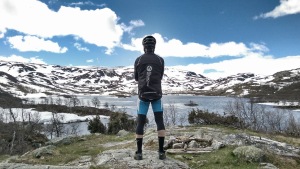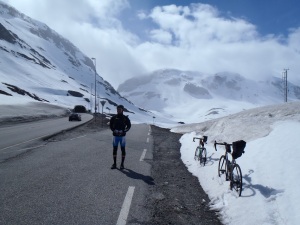Preparing for Winter Cycling
As the nights draw in it can be all too tempting to stay in the warm and leave the bike in the shed but with a few kit modifications you can still enjoy clocking up the miles despite the plummeting temperatures.
Recent years have seen major advances in fabric and kit technology, making it far easier to stay warm and dry. Dressing appropriately for the duration of your ride can be tricky – what seems fine at the start can soon feel too warm. Layers are key; trapping air between each to help maintain your body temperature and allowing you to take them off as you warm up.
As with most things, the foundations are vital. A warm base layer should be your starting point, preferably with long sleeves and legs. Merino wool has many excellent benefits, being naturally odour-resistant, warm and soft next to the skin and retaining heat even when it’s wet. If, however, you’re a ‘stop for coffee and cake’ kind of a rider then man made base layers might be best for you as they wick sweat away from the body – there’s nothing quite like wet wool to make you feel chilly.
But nothing beats a good pair of merino socks, they’re breathable and will keep your feet warm and dry but don’t be tempted to wear more than one pair as it will restrict your circulation and make your shoes too tight. By keeping your legs warm with a pair of thermal tights, you’ll be better able maintain your performance. Bear in mind, when it gets really cold, you may want to wear your shorts underneath your tights, in which case you’ll need to consider having a pair of tights without a chamois – as the padding will already be in your shorts.
The number of layers on top of your base layers is down to personal preference and what the various layers are made from. Generally, your mid layers could double up as an outer layer in milder weather, so look for showerproof and wind resistant fabrics. They should be close fitting with high necks and snug cuffs to stop wind getting in, but most importantly they should be breathable. Leg and arm warmers are another very useful little accessory, allowing you to peel off without stripping down – and without much outlay, we are in Yorkshire after all!
Ideally, your outer shell should be very light, so you can stuff it in a pocket and throw it on when you need some extra warmth and protection from the elements. Achieving that holy grail of waterproof but breathable is not easy but advances in fabrics mean that some jackets now get pretty close, albeit sometimes at the expense of weight (but a lighter wallet)!
Cold feet and hands really will make for a miserable ride. Starting with the feet, overshoes really do transform your normal footwear, stopping rain getting in through the top of your shoes. Neoprene versions provide wind and water protection while fleece booties keep your feet warm. Look for Gore-Tex lining, to provide insulation and protect against the elements, and insulated liners and fleece insoles.
Gloves should fit well. You will probably need to change your gloves to suit the weather so it’s sensible to invest in a couple of pairs; one for milder days and fully waterproof ones on days when it never leaves off. Look for warmth, gel pressure point padding and a good grip so your hands won’t slip on wet handlebars and you’ve still got control over the breaks. Again, look for breathability. Sweat-soaked hands will soon get freezing cold.
Helmets are now incredibly well ventilated but during the winter that isn’t quite so appealing. A helmet hat will fit snuggly beneath your helmet, providing a layer of insulation to keep you warm. A neck warmer will also help to keep the bottom half of your face warm and stop wind whistling down your jacket.
It’s important not to forget a few essential changes to the equipment on your bike. Winter tyres, just like for a car, give much better grip and reduce the chances of skidding and the compounds they are made from are specifically designed to withstand colder temperatures, so they won’t start breaking down. If you don’t already have them, and many road cyclists don’t, mud guards are invaluable – not just for the obvious reason but also to stop cold water splashing up your back.
No matter how much riding you do, don’t forget that in winter visibility is reduced, and not just at night. Make sure the lights on your bike are bright enough so you can be clearly seen by other road users at all times. A powerful beam at the front will also help you see the ground more clearly and remember to check your rear light is clean and has fully charged batteries. Look out for reflective details on all the kit I’ve mentioned and maybe add some reflective stickers to your bike frame and some ankle and wrist straps. And finally, any cyclist’s mantra – there’s no such thing as bad weather, just unsuitable clothing!

